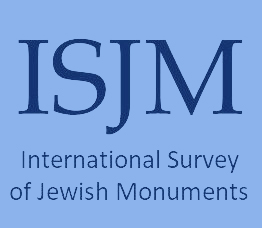Description of the project
The digital database, "Holocaust Memorial Monuments" is a joint effort of the The Center for Jewish Art, Hebrew University (CJA); the Miller Center/Feldenkreis Program, University of Miami (MC); and the International Survey of Jewish Monuments (ISJM). It is a new component of the Bezalel Narkiss Index of Jewish Art, created to collect and preserve digital documentation about Holocaust memorial monuments, including standardized mapping, photography, description, and historical research. When complete, the database will include all monuments memorializing the Holocaust and the genocide of the Roma in all the countries affected by the Holocaust and wherever the Holocaust is commemorated. The database will create searchable and comparative records for educational, public policy, and academic use.
The Center for Jewish Art, Hebrew University (CJA); the Miller Center/Feldenkreis Program, University of Miami (MC); and the International Survey of Jewish Monuments (ISJM) have launched an ambitious but necessary project to collect and codify information about all Holocaust memorial monuments around the world into a single accessible digital database. This is the first scholarly effort, on a global scale, to inventory and describe all Holocaust memorial monuments, and to collect and digitally publish comparable data about their inception, design, creation, installation, and subsequent roles in commemoration and education.
Project Summary
The project will create a digital inventory and database, "Holocaust Memorial Monuments." When finished, the database will include all monuments memorializing the Holocaust in the countries affected by the Holocaust and wherever the Holocaust is commemorated.
The inventory and database will preserve information about and images of all Holocaust memorial monuments, their history, design, message, maintenance and use, including standardized mapping, photography, and description. The database will create new searchable and comparative records for public policy and academic uses. It will also form a basis for uses of Holocaust memorial monuments in teaching about the Holocaust and in fighting Holocaust denial.
Project Scope
The focus of this project will be on general or collective memorial sculptures and plaques commemorative of certain places and events associated with the Holocaust and the oppression and murder of its victims. Plaques or memorials erected to commemorate individuals or single families, placed mostly in cemeteries and synagogues, will not be part of this inventory unless these are perceived or used as surrogates for larger groups (such as is the case of memorials to Anne Frank, Janusz Korczak, Raoul Wallenberg, Jan Karski, etc.). Museums devoted to the Holocaust, or permanent displays about the Holocaust in museums will also be excluded.
The primary purpose of this project is to inventory memorial monuments to Jewish victims of the Holocaust, or the Shoah, or victims who the Nazis classified as Jews. Memorials to Roma and LGBTQ victims are included as well, since those victims - like the Jews - were targeted because who they are and not because of their political persuasion etc.
Project Rationale
The events, people, places, and process of the Holocaust, or literature, films, music, art, etc., about the Holocaust are documented, studied, archived, and taught about in many institutions, and by many public and private organizations for various reasons and in different ways. Until now, however, there has been no comprehensive and systematic effort to document and study Holocaust commemoration through memorial monuments, to collect and preserve their history, art, and messaging, and to use them in education about the Holocaust.
The primary function of memorial monuments is to remind and connect us to people, places, and events of the past, and inspire us to respect their memory and act in the present. Holocaust monuments adjure us to remember, seek truth and justice, and teach the next generations to avoid recurrence in the future. Collectively, they also present to scholars and educators an historical record of how the Holocaust has been remembered (or not) over several generations. Monuments also act as a cultural thermometer indicating levels of public discourse, engagement, and understanding of the history and nature of the Holocaust over time. Thus, memorial monuments created since the Holocaust are an invaluable record of the moral, religious, artistic, social, and political history of our time. This includes the history of monument desecration and destruction, or their refurbishment, which will also be documented.
Victims and events of the Holocaust are remembered in many ways. Of these, the numerous physical immovable memorial monuments – estimated to be in the thousands - are the most permanent, prominent, varied, and scattered type of remembrance. They are designed to remember collectively Jewish and other victims of the Holocaust or to recall specific events, groups of victims, families, and individuals. Since the end of the Second World War, victims and survivors and their families, Jewish congregations, communities, organizations, and governments of towns, cities, and countries have erected numerous Holocaust memorial monuments.
Many memorial monuments are site specific and are located on places of Holocaust-era suffering, atrocities, and murder, including sites of ghettos, assemblage and deportation centers; concentration, labor, and death camps; killing sites and mass graves; and other places. A small number of these monuments are well known, well documented, and regularly receive popular and scholarly attention. There are, however, many hundreds of lesser-known memorials on Holocaust sites, and a very large but unknown number of memorial monuments in synagogues, cemeteries, community centers, parks, schools, government buildings, churches, and other public spaces. There are monuments in dozens of countries, including many that were not directly affected by the Holocaust when it happened, but where the Holocaust has been commemorated.
The completed database will serve as a key instrument for preserving Holocaust memory, teaching and learning about the Holocaust as well as the history and process of Holocaust commemoration itself. Importantly, the records about monuments in the database can also be used to counter Holocaust distortion and denial. The collected and searchable data will also provide insights into the planning and design of memorial monuments by governments, congregations, NGOs, and individuals.



